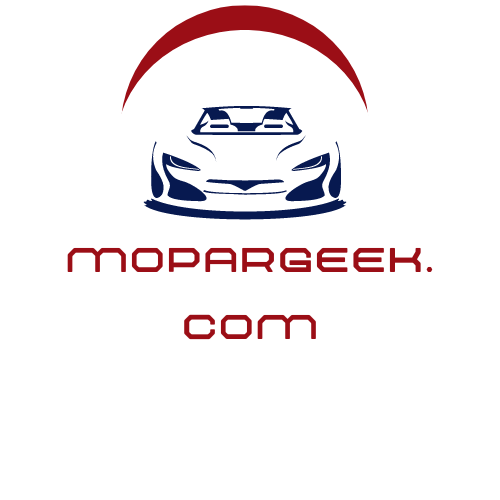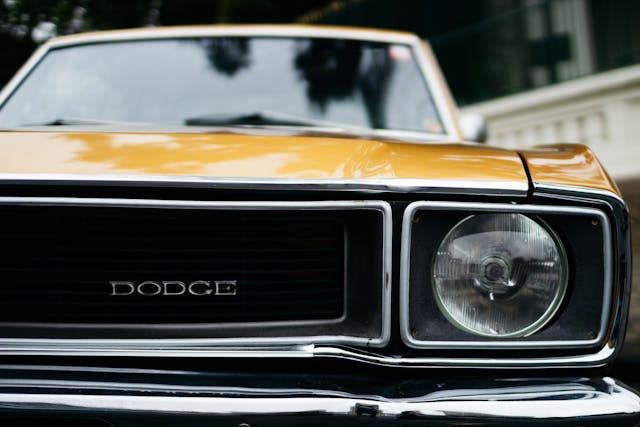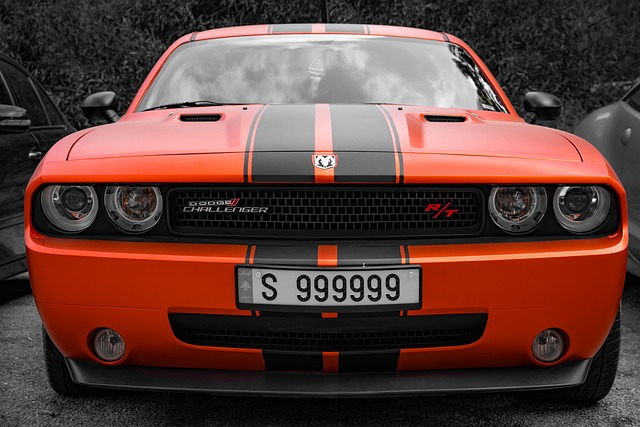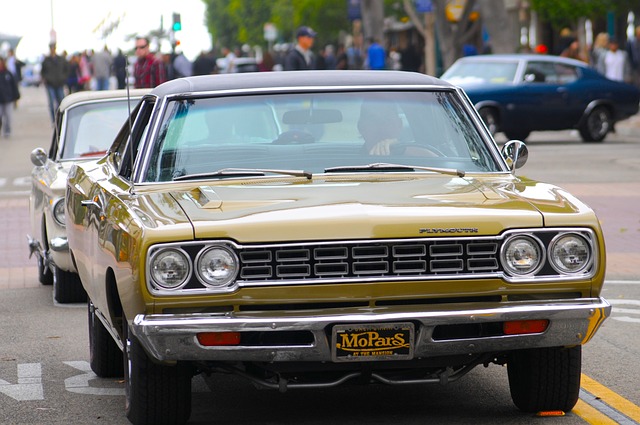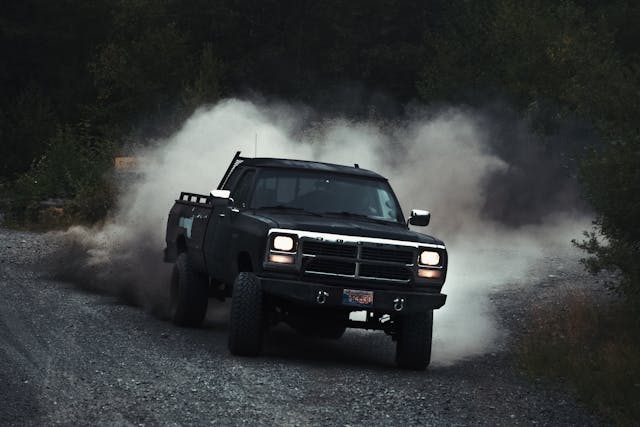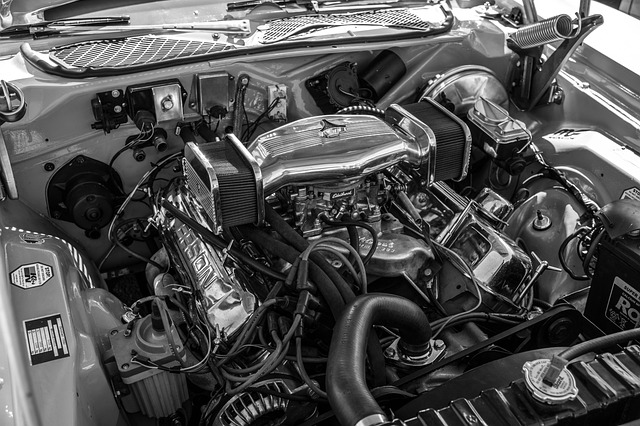What is a Dodge Scat Pack, and how much does it cost?
When the Dodge Scat Pack debuted in dealership showrooms in 2015, the moniker Scat Pack was already ingrained in Mopar mythology. Dodge used the term “Scat Pack” in 1968 to refer to a collection of high performance automobiles capable of completing the quarter-mile in under 15 seconds—an impressive achievement for any muscle car from the period. These Mopar muscle machines came from across the Dodge product line, including the compact A-Body models like the Dodge Dart GTS and Dodge Swinger 340, the mid-sized B-Body models like the Coronet R/T, Super Bee, and Dodge Charger R/T, and the ponycar segment with the E-Body-based Challenger R/T.
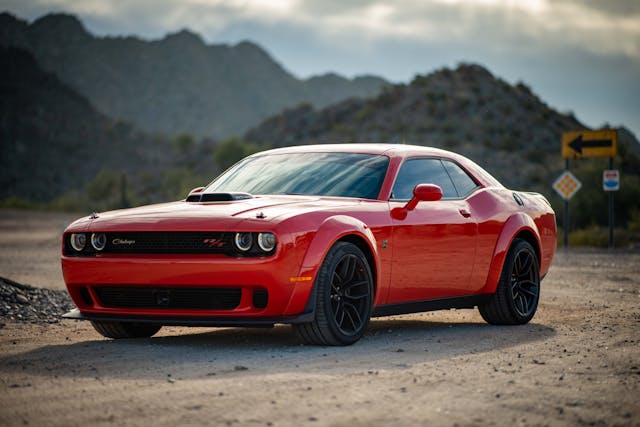
Perhaps unjustly, the second generation of Scat Packs hit the market in 2015 with the game-changing 707-hp Hellcat Hemi Challenger. Overshadowed by SRT’s newest ground-based fighter jet, the 392ci Hemi-equipped Dodge Scat Pack Challenger and Charger would be the successors to the SRT 392 Challenger (2011-2018) and Charger (2012-2018), which would fade quietly from view despite the SRT 392’s superior brake package, larger tire footprint, and flatter high-speed handling. Most believe that the loss of the SRT 392 was more than accounted for by the introduction of SRT’s Hellcat-powered variations, but the plain-Jane 392 SRTs are becoming more valuable as secondhand cars, as we’ll see.
Scat Pack Precursor: the SRT 392.
Even though the internet has mostly disregarded the digital footprints of the 2011-2018 SRT 392 Challenger and Charger, it is nevertheless informative to analyze the Scat Pack 392’s forerunner here. SRT was charged with building the 392ci “Apache” Hemi—rated originally at 470 hp—as a successor for the 425hp 6.1-liter Hemi, which was unique to SRT cars between 2008 and 2010. The 392ci Apache Hemi is regarded as the distinguishing component of the 2015–present Dodge Scat Pack. The third-generation reincarnation of Chrysler’s 392 HemiV-8, codenamed Apache, delivered larger displacement and better-flowing cylinder heads, ultimately giving way to the workhorse Ram-exclusive 392 BGE Hemi (2014) and Hellcat Hemi V-8s (2015). When the Apache 392 made its debut in the Dodge Scat Pack Charger and Challenger in 2015, its output had climbed to 485 horsepower thanks to further breathing enhancements.
Dodge Scat Pack Charger and Challenger
The attractiveness of the 392 Hemi-powered Dodge Scat Pack Charger and Challenger over the overachieving SRT 392 vehicles was mostly price-related. By foregoing the SRT 392’s bigger and more costly Brembo six-piston brakes, Nappa leather inside, 900-watt Harman-Kardon speaker system, and Bilstein adaptive dampers, the cost of a 392 Hemi-equipped Dodge may be drastically reduced. For example, in 2015, the first year both the SRT 392 Charger and the Scat Pack Charger were available simultaneously, the base price of an SRT 392 was $48,380, compared to the $40,990 MSRP for a Scat Pack Charger, a $7,390 difference.
In a recent interview, Dodge president Tim Kuniskis said, and this has subsequently been confirmed by the Dodge brand’s sales performance, that people connect to drag racing more than road course racing. Even when prospective customers don’t participate in any form of racing, drag racing is the common aspirational denominator among would-be enthusiasts, and the sales success of the 392 Hemi-powered Scat Pack (a throwback to Dodge’s historical success in drag package cars) and its raw performance numbers make the Dodge Scat Pack in all its guises (Scat Pack Challenger, Scat Pack Charger, Scat Pack Widebody Challenger, Scat Pack Widebody Charger, Scat Pack 1320)
How Many Horsepower Does a Scat Pack Have?
All 392 Scat Pack Dodges use the same Hemi V-8 design and tune, with a rated output of 485 horsepower (6,100 rpm) and 475 pound-feet of torque (4,100 rpm). When the Dodge Scat Pack arrived in 2015, HOT ROD was able to independently verify the power output on a Dynojet chassis dyno at Kenne-Bell Performance in Rancho Cucamonga, California (see the article here). The vehicle tested was a Scat Pack Challenger with an eight-speed TorqueFlite gearbox and a peak power output of 432 horsepower at 5,900 rpm at the rear wheels. It’s also worth noting that, in addition to increasing the 392’s output from 470 to 485 horsepower, Dodge changed the gearbox from the five-speed automated (the Mercedes-derived NAG1) to the eight-speed TorqueFlite in 2015. This enabled the enthusiast/drag racer to maintain the engine at or near its power peak by making good use of the steering wheel-mounted paddle shifters.
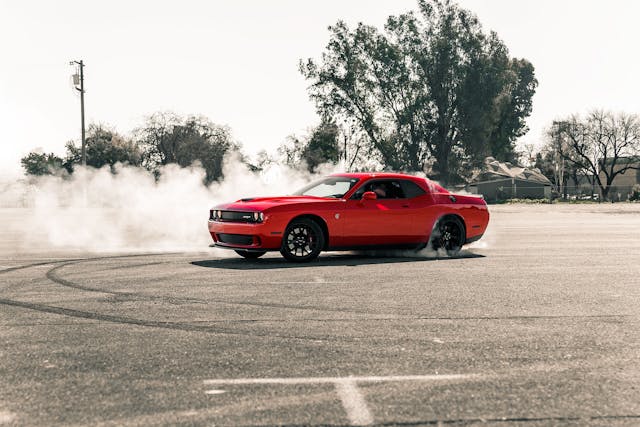
What Does ‘Scat Pack’ Mean?
The Dodge Scat Pack originally consisted of three 1968 Dodge models: the Dodge Charger R/T, the Dodge Coronet R/T, and the Dodge Dart GTS. Following the success of the non-factory Mr. Norm’s Grand Spaulding Dodge big-block Dart GSS and Dodge’s Dodge Rebellion ad campaign in 1967 (a series of ads loosely promoting Dodge performance vehicles), the Dodge Scat Pack became a recurring fixture for Dodge through the 1971 model year, though none of these cars were given the name “Scat Pack.” The two names crucial to today’s Dodge Scat Pack are the Charger R/T and the Challenger R/T, both available in 392 Hemi Scat Pack specification. The moniker Scat Pack is a pun on the “Rat Pack,” a rotating group of postwar Hollywood stars renowned for their wild parties. Substituting “rat” for the rhyming “scat” underlined how quickly such partying activities may escalate. The term “scat” takes on new meaning thanks to the free-spirited improvisational vocalizations of jazz singers such as Ella Fitzgerald, Louis Armstrong, and Cab Calloway, and it is echoed in Chrysler’s flamboyant color palette, which was popularized by the 1960s youth anti-establishment art and cultural movements.
Dodge Scat Pack Wide Body
After introducing the widebody Dodge Demon in 2018, Dodge immediately extended the widebody treatment across the Dodge passenger vehicle lineup. The move was a style and performance breakthrough that was accessible on the low-cost Scat Pack and subsequently on the 5.7-liter Hemi-powered R/T Charger and Challenger. The widebody makeover is centered around larger 20×11-inch wheels with 305/35R20 tires. These are protected by broader fender flares and feature larger Brembo six-piston brake calipers and 14-inch rotors. Aerodynamic splitter/spoilers are installed on both ends of Widebody-equipped cars, and the total ride height is reduced as a consequence of firmer suspension for increased stability at high speeds.
Dodge sells the Scat Pack Challenger and Scat Pack Charger in both narrow-body and widebody configurations, with the widebody treatment adding around $6,000 to the MSRP. Though the widebody treatment option seems to have a low material cost (you can learn how to convert your current narrow-body Challenger to a widebody here), the cosmetic result is transformative. The Charger and Challenger are built on the LX platform, which has a relatively high cowl height compared to its limited track width, allowing the widebody treatment to work very well. The stylistic advantage of the widebody option is entirely independent of its considerable lateral-g handling improvement (.94g for widebody versus.92g for narrowbody). The only Scat Pack model that is not available in widebody configuration (yet!) is the Scat Pack 1320.
What is Scat Pack 1320?
In 2019, Dodge stated that it will manufacture a drag-specific version of the Scat Pack Challenger known as the 1320, named after the number of feet in a quarter-mile. For drag racing enthusiasts, the Scat Pack 1320 includes many of the powerful drag racing gear found on the Dodge Demon, with the notable absence of the Demon’s supercharged 840-hp Demon Hemi V-8. Dodge president Tim Kuniskis spoke regarding the Scat Pack 1320: “I wanted to construct a vehicle that was ready and plumbed for nitrous, which we obviously cannot do. It’s a joke, but I often say that the 1320 was the ‘power-adder prep package.’ Because it is ready to leave, correct? You’ve got the suspension and the tires; it’s a pretty great combo. If you ever repeat this, you must remark, ‘He claimed he was joking!'”
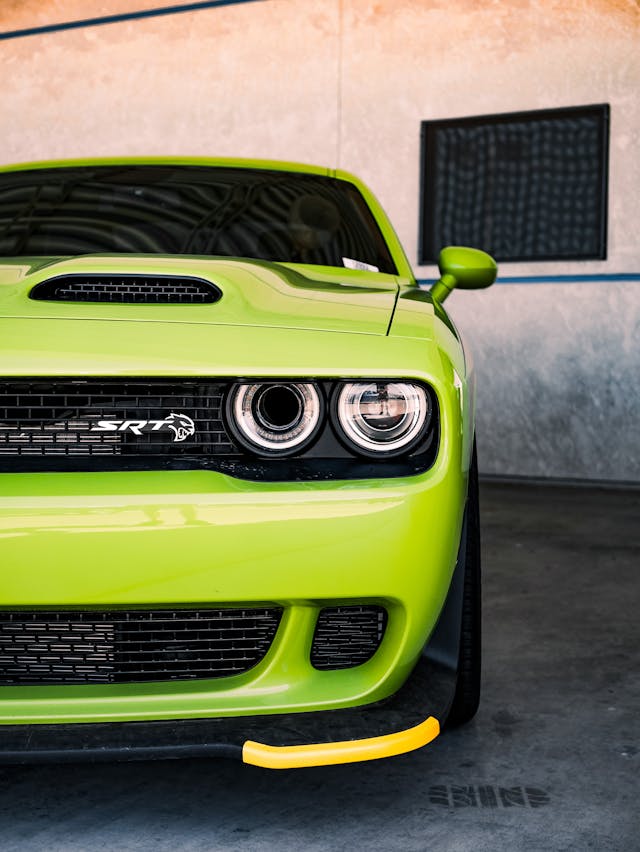
If you’re wondering what Kuniskis is talking about, you’re probably not a 1320 client. However, if you are, consider this: The 1320 has factory Nexen drag radials at all four corners, the Demon’s durable 41-spline rear half-shafts, line-lock for burnouts, a trans brake, and drag-oriented active suspension. Of course, there’s the Scat Pack’s competent 485-hp 392ci Apache Hemi, which has shown to be quite responsive to the aftermarket’s many power accessories, including smog-legal supercharger packages. The Scat Pack 1320 is difficult to spot in traffic unless you know what to look for; the enameled chrome-plated emblems on its fenders depict the Scat Pack Bee looking forward (rather than behind, as if watching an opponent catch up), and she’s wearing a serious race helmet with the number “1320” just below her.
How Much Is a Dodge Scat Pack?
When there isn’t a shortage of inventory in dealer showrooms, the price of a used automobile is much lower than that of a new car, but a review of used 2015-2020 Dodge Scat Packs on eBay Motors vs the cost of a new one on Dodge.com reveals some interesting findings. The first general observation is that used standard-body Scat Pack Challengers are significantly more common in the used-car market than any other Dodge Scat Pack vehicle (widebody versions, 1320, or Charger). We discovered that the average used price for a 2015-2020 narrow-body Challenger Scat Pack is $39,000 (a brand new one specified on the Dodge.com website costs $42,895 for a basic model and $56,725 for a well-equipped narrow-body). Moving up to a widebody Challenger Scat Pack yields even more odd results, with the average cost of a used widebody being $50,000 and a new base-model widebody Scat Pack Challenger costing just $48,220. We couldn’t find any used Dodge Scat Pack 1320s for sale on eBay that day, but a special-order quotation for a Scat Pack 1320 on Dodge.com was $44,410 (well-optioned at $49,660).
What exactly is going on here?
Inventory is drained owing to a lack of microprocessors, leaving only a sprinkling of used inventory that may subsequently be priced much higher. Because high-performance automobiles like the Dodge Scat Pack are nearly usually impulsive purchases, few purchasers choose to special-order a car with a large down payment and wait another three months for delivery. This, on the other hand, is proving to be a wise decision, particularly given that the Hemi V-8 will be phased out entirely in 2024.
So, what about the Dodge Charger Scat Pack, the 4 door sedan variant of the 392 Scat Pack family? secondhand Scat Pack Charger sedans are more than twice as uncommon as secondhand Challenger coupes, and the average asking price on the day we looked was a whopping $50,000 for a narrow-body Charger Scat Pack. This compared to $42,895 for a new base Scat Pack Charger and $56,725 for a well-equipped unit (you practically save $7000 by purchasing a new one and waiting for it to arrive).
